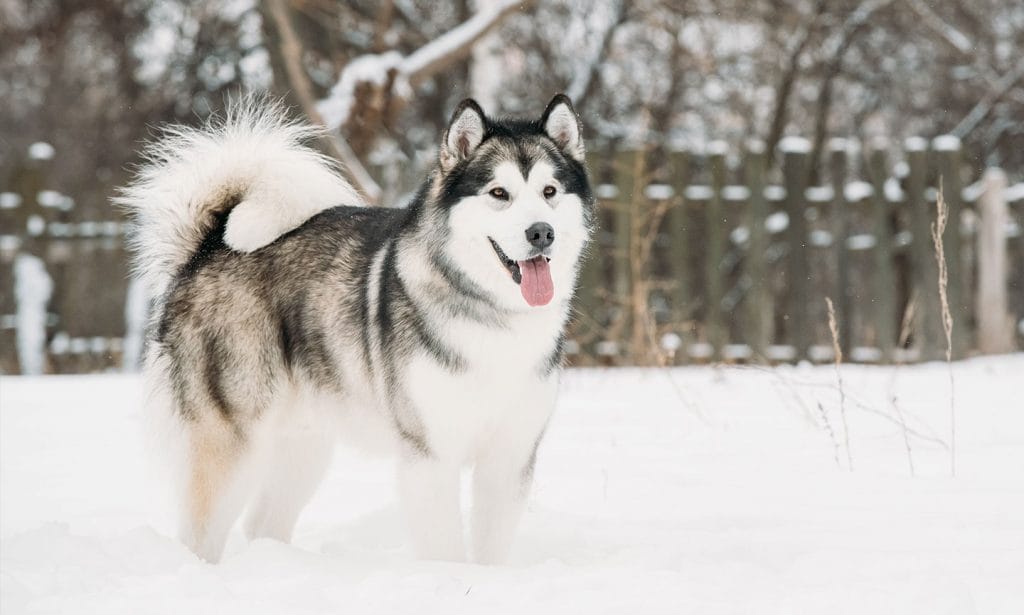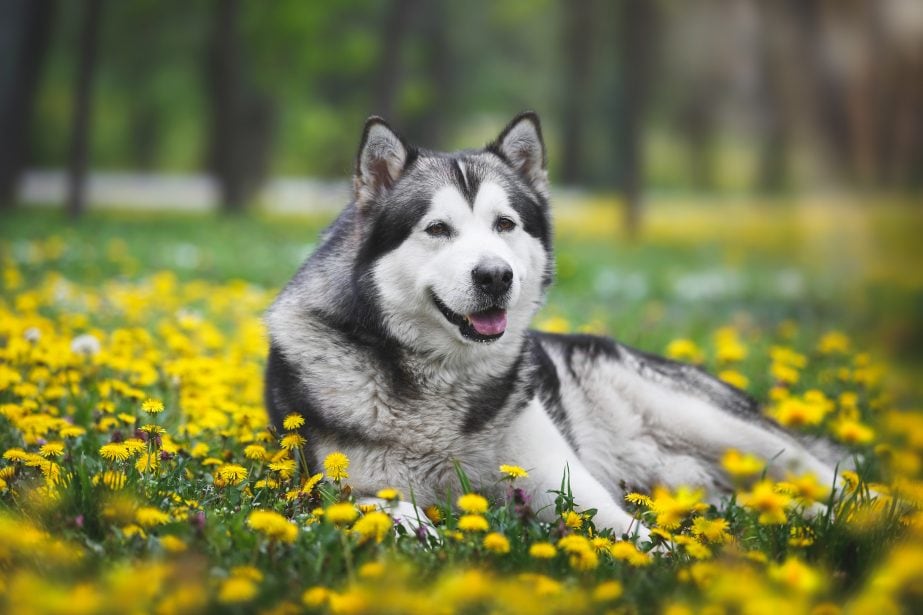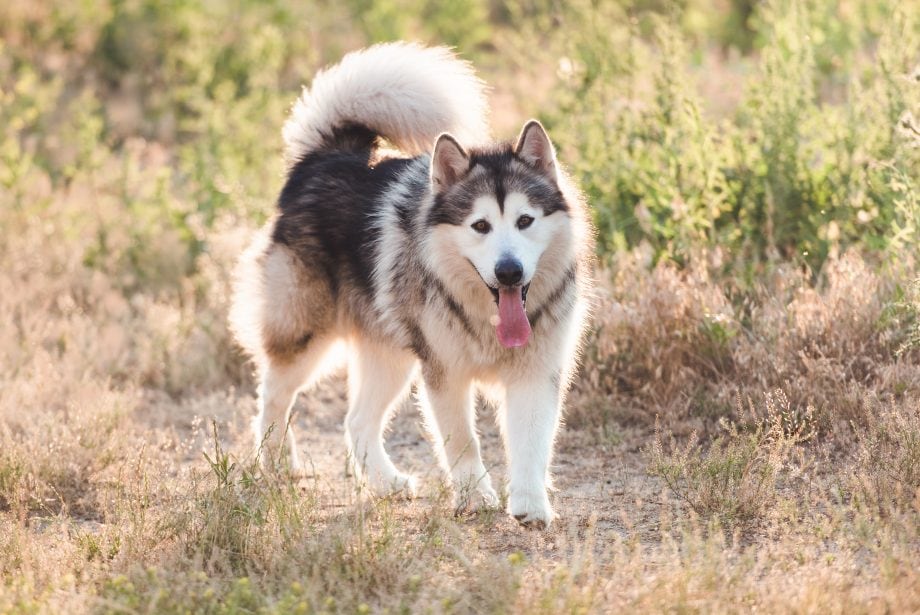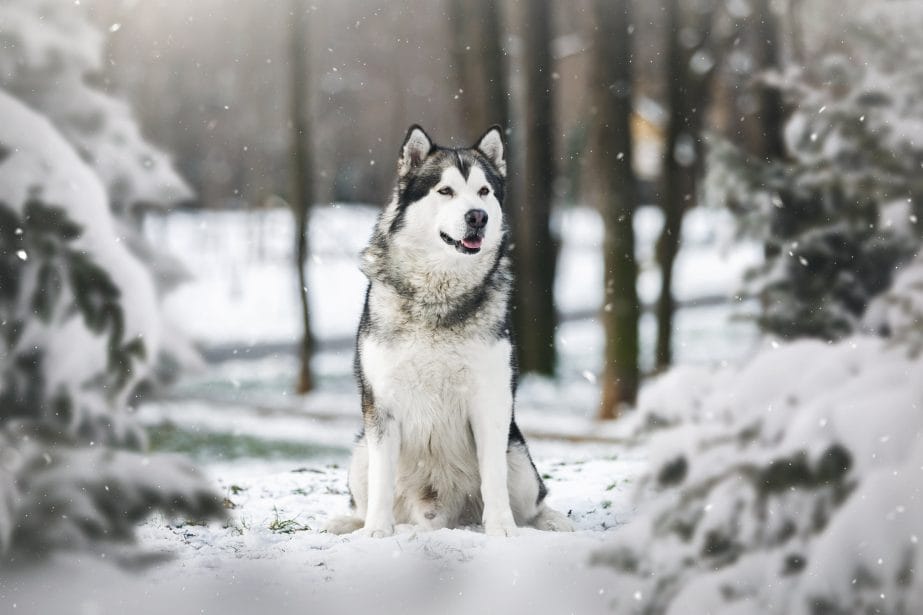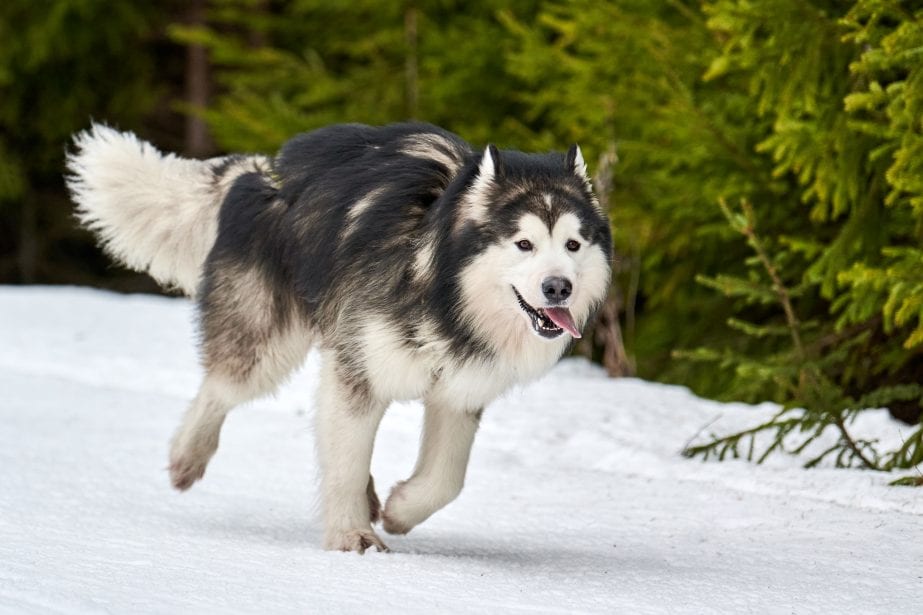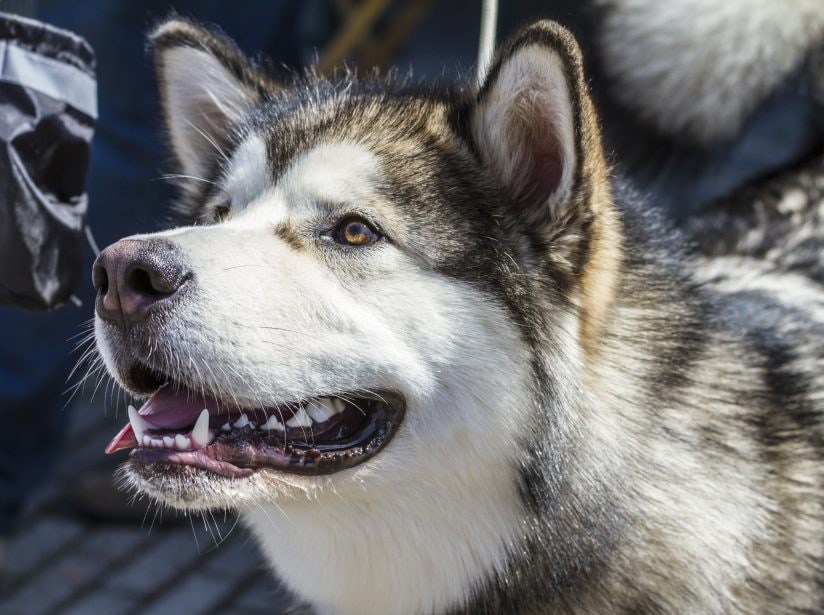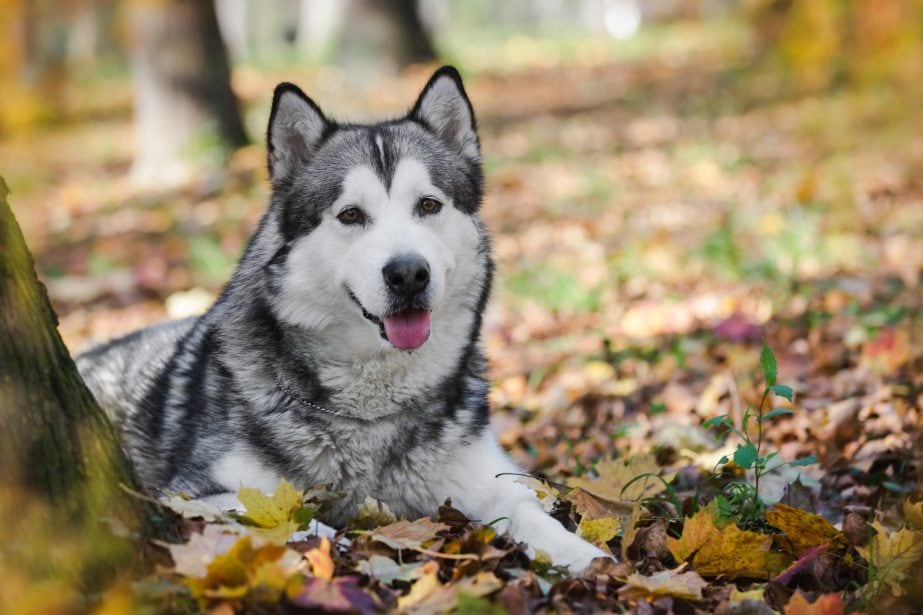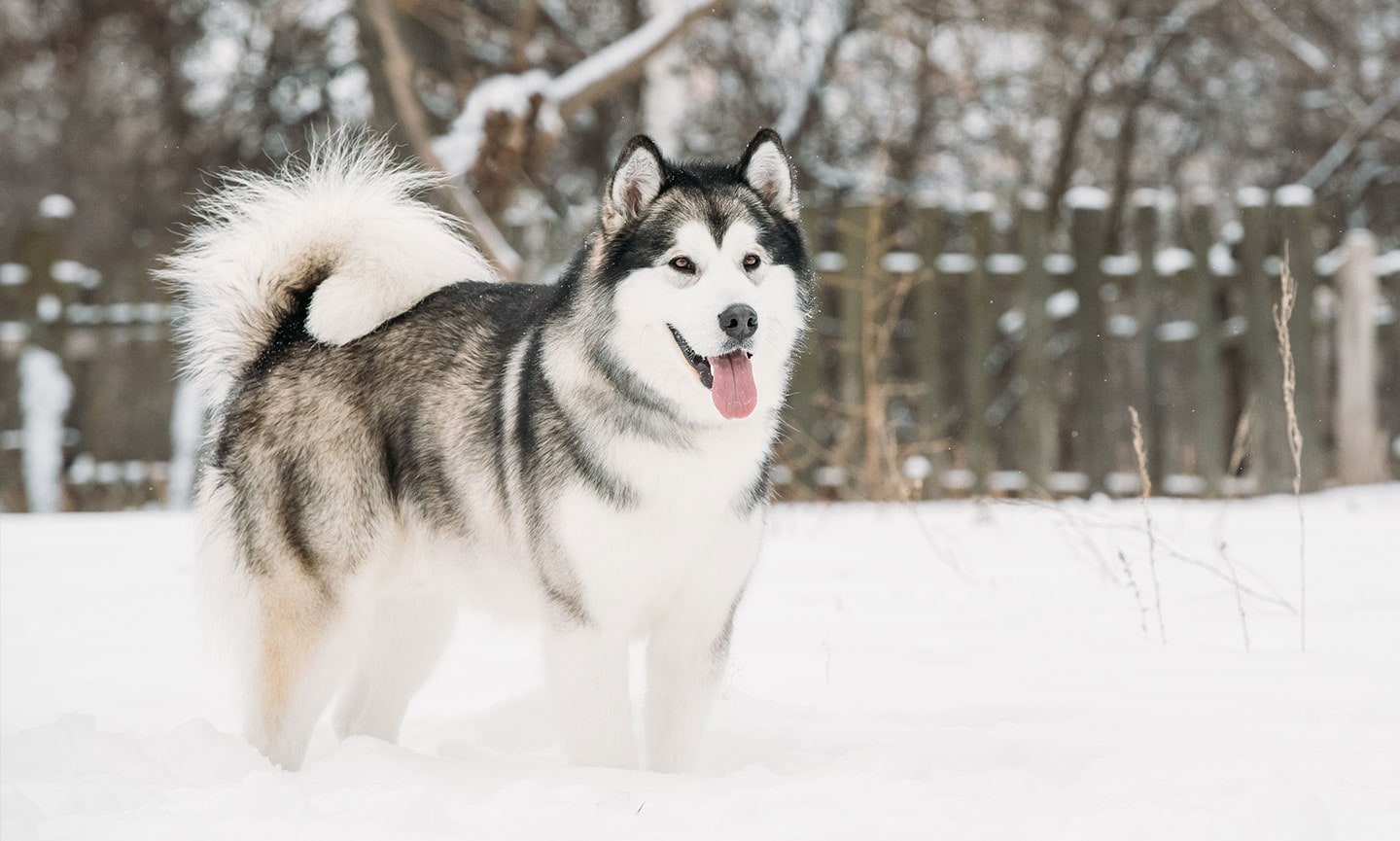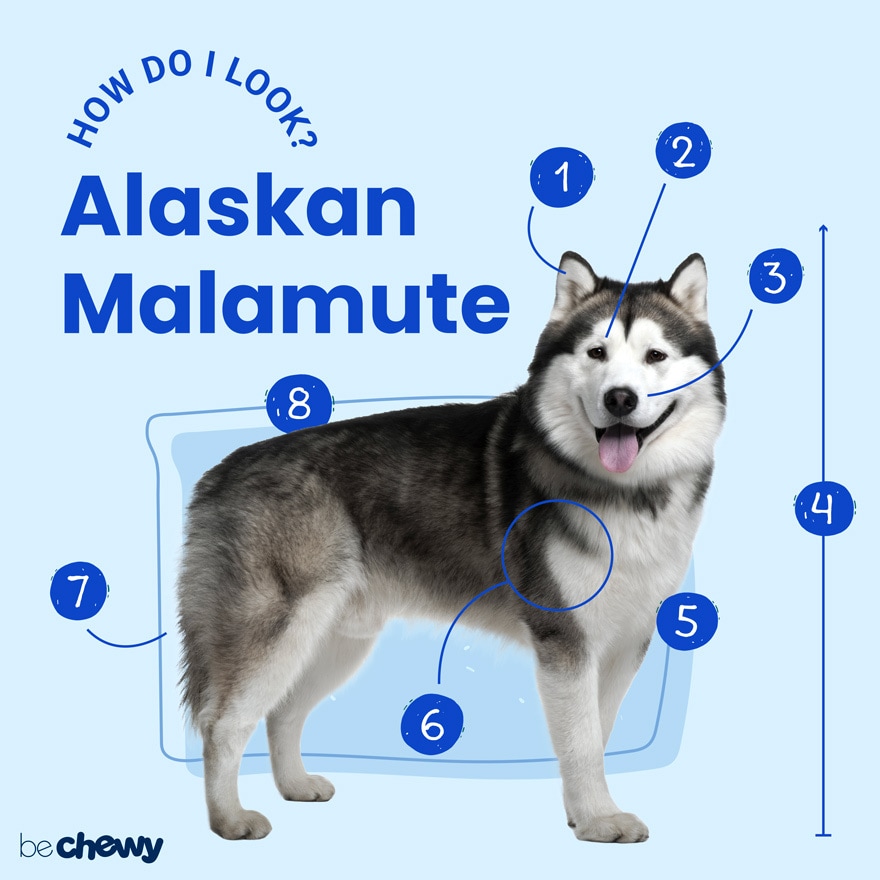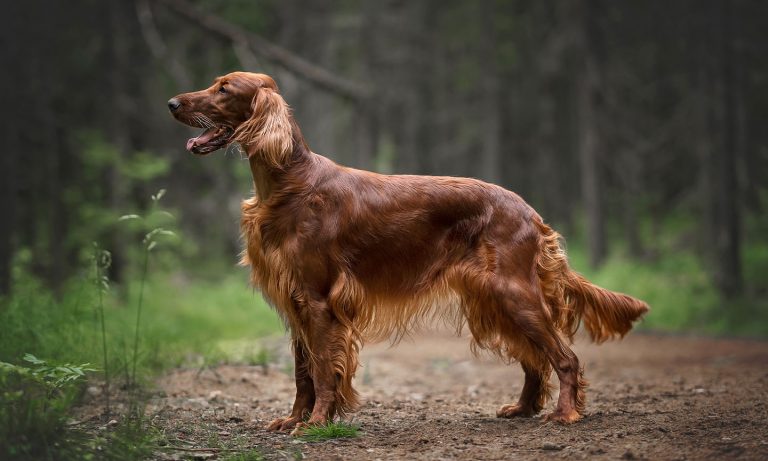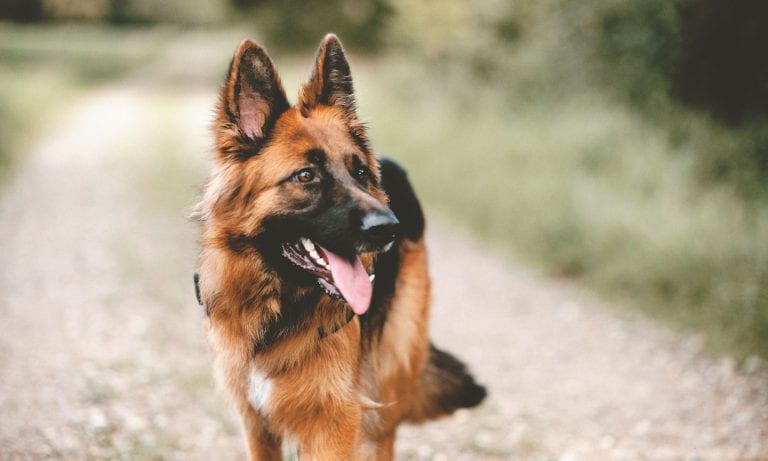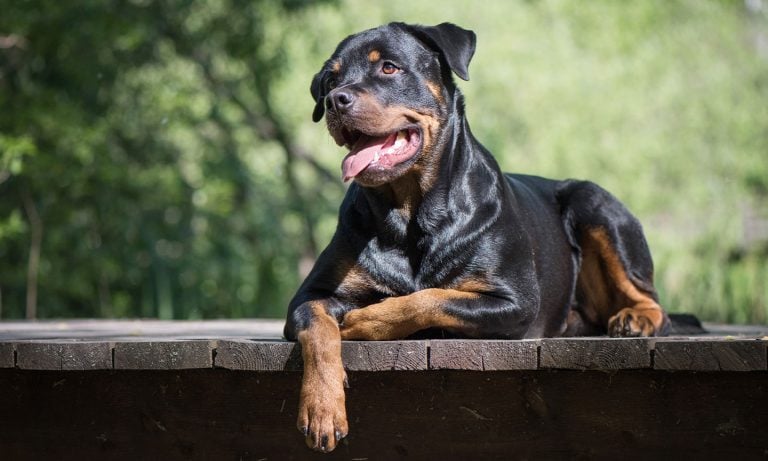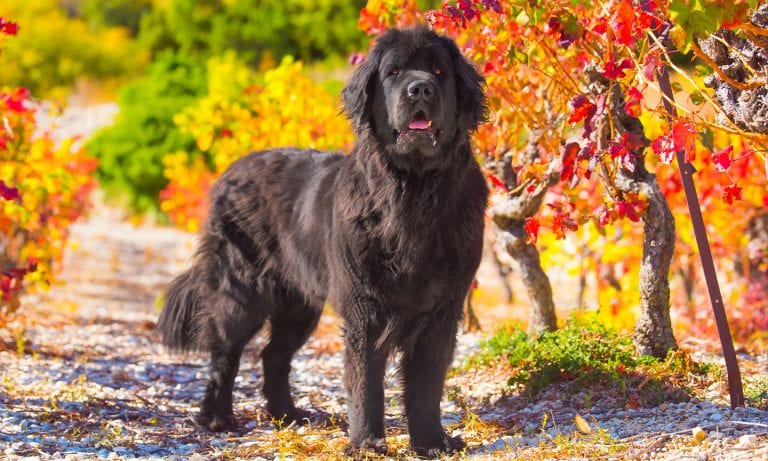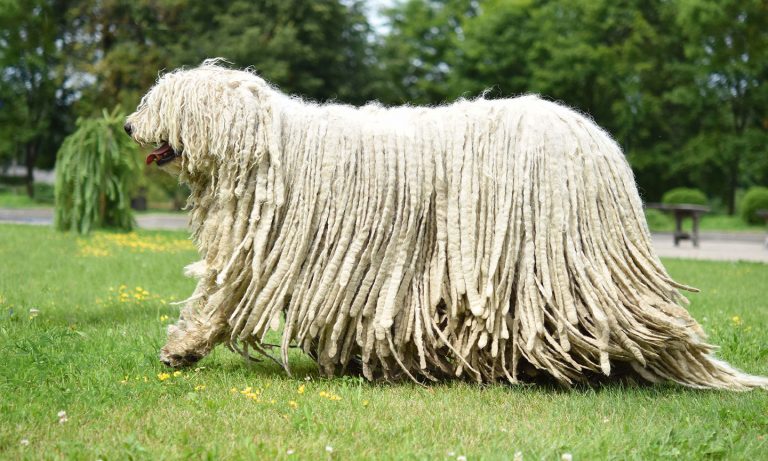Alaskan Malamutes were born for the Winter Olympics. And if the sport includes solving puzzles along the way, Mals are totally in. These super-smart and super-active dogs do not like being bored. They’ll swipe left if you’re not entertaining enough. But good news! They love a crowd, so your social calendar should always be full. If you keep a super-tidy home, may we recommend the Poodle? The Alaskan Malamute sheds a ridiculous amount twice a year. Life with an Alaskan Malamute is full of activity and adventures, and you wouldn’t have it any other way.
Breed Snapshot
Temperament:
FriendlyPlayfulIndependentCoat Color:
WhiteGrayBlackSableRed
Best For
An Alaskan Malamute is best for dog-savvy people who love being active outdoors. Malamutes thrive with plenty of exercise and training—and are people-friendly pups who do best as a solo pet or with an opposite-sex canine companion.
Alaskan Malamute Temperament
Alaskan Malamute dogs thrive on human attention and are happy to welcome a crowd to your house. They don’t play favorites with family members, either—they’re equal-opportunity snugglers. They’re not barkers, but they are chatty—yelps, howls, and “woo woos” are all found in their repertoire. So expect them to join in on the conversation.
Goofy dogs with a lovable personality, Mals are also great with kids and babies, although they’ll need to be supervised around small children. They’re big dogs, so they might accidentally knock a child over, and if they nip, they could cause injury. (They do have a strong bite force.)
While Alaskan Malamutes are not aggressive toward people, they can be strong-willed. Plus, this breed has a high-prey drive and is dog-aggressive, so they generally do best as your one-and-only. And don’t even think of letting them off-leash, as they’ll take off after critters or cats. For these reasons, it’s best to train your pup from the get-go.
These athletic dogs are always up for outdoor playtime, especially if you give them a job. If you don’t have a sled, this working dog breed is just as willing to pull you on a bike. Or just strap a backpack on your Mal and go hiking.
Savvy problem-solvers, Malamutes are capable of finding new ways to dig under the fence or chew up the furniture unless you keep them challenged. Games of hide-and-seek and teaching them cool tricks are all good ways to exercise their brains, so are dog sports like agility, rally and bikejoring (a sport created to help keep sled dogs in shape in off-winter months).
How to Care for a Alaskan Malamute
All that fluffy, gorgeous fur in an athlete’s body means these dogs are high maintenance. An Alaskan Malamute puppy or dog needs daily exercise (mental and physical), a lot of grooming (daily brushing during shedding seasons) and a job to do, or they get bored. And training is a must with these strong-willed dogs.
Alaskan Malamute Health
Alaskan Malamutes have a life expectancy of 10 to 14 years, but like many large breeds, they’re prone to some health issues. It’s good to know what they are in advance, so you can discuss with your vet how to keep your Alaskan Malamute healthy throughout their life. If you’re getting your pup through a breeder, make sure they’ve screened the puppies and their parents for potential health problems. If you’re adopting your dog through a rescue, make sure you get a copy of the vet’s wellness exam.
- Hip and Elbow Dysplasia: Sometimes, the hip or elbow joints won’t develop properly, so they don’t fit well. That can lead to pain and lameness. It’s hereditary, so the best bet is to get your pup from a breeder who tests for this, but even that’s not a guarantee. Obesity, improper exercise, and poor nutrition can also be factors. Keep your dog lean and give joint-friendly supplements like glucosamine and chondroitin starting at 4 or 5 years old, or sooner if the vet suspects a problem.
- Arthritis: The joints in older dogs get worn down just as they do in people, especially in large-breed dogs like Malamutes, leading to pain and lameness. And if your Mal is overweight, there’s more strain on the joints, which can make the condition worse. Don’t overfeed your dog, and try MSM supplements, which are natural anti-inflammatories.
- Obesity: Malamutes were bred to haul sleds without many food breaks, so they naturally hoard calories. Too much weight leads to all sorts of health issues, including diabetes, cancer and heart disease. Talk to your vet about feeding proper portions for their age, weight and activity level, as well as their best food choices—a mid-to-high protein kibble works best for most adult Mals. And keep your pet active, which will help keep the pounds off.
- Cataracts: Malamutes can develop hereditary cataracts as well as a condition known as “day blindness,” which affects the retina and makes it hard for dogs to see during the day. Breeders can screen for these genes, and vets can catch cataracts during an eye exam. Surgery is often the preferred treatment for cataracts; there is no current treatment for day blindness.
- Epilepsy: Malamutes can inherit a tendency to have seizures, typically starting after puppyhood. When dogs have a seizure, they can stiffen, fall, and then begin to jerk. Low-cost medications can keep the seizures under control, with a vet monitoring the condition.
- Cancer: Large-breed dogs are prone to cancer, and Malamutes aren’t an exception. Mals can develop any type, including bone and spleen cancer and lymphoma, a cancer of the lymph nodes. Cancer is easier to treat when caught early (with surgery or chemo), so it’s not a bad idea to start taking your Mal for twice-yearly vet visits when your pet turns 6 or so.
- Alopecia X: Also known as coat funk, this skin condition causes your Mal’s top coat to dry up and fall out in patches, exposing the undercoat, then the skin. This is a hereditary condition, and there’s no treatment for it at this time. The best you can do is to keep the coat healthy and clean (fish oil supplements may help) and be careful not to let the exposed skin become frostbitten or sunburned.
- Polyneuropathy: This is an inherited neuromuscular disease. An affected dog usually starts showing signs before they are 2 years old. Symptoms include a growing aversion to exercise, walking abnormally and changes in their bark. There is currently no treatment for this disease. Dogs can be tested to confirm the diagnosis and prevent the disease from being passed to future generations of Malamutes.
Alaskan Malamute History
The Alaskan Malamute’s origins date back thousands of years. Like their cousin, the Siberian Husky, Alaskan Malamutes were sled dogs—one of the most ancient Arctic breeds. But unlike Siberians, the Inuits bred Mals to haul heavy loads on sleds slowly over long distances, so speed wasn’t as prized as their power and strength.
Malamutes have hauled sleds for miners during Alaska’s gold rush in the late 1890s, adventured on expeditions to the South Pole—including the first one in the late 1920s—and aided US forces during World War II.
The American Kennel Club (AKC) recognized the Alaskan Malamute breed in 1935. Tragically, after the war, there were few Malamutes left, so Malamute lovers began breeding these dogs again. Now, they rank 58th on the AKC’s list of popular dogs.
Alaskan Malamute history continues their rich tradition into the 21st century. In 2010, Malamutes became Alaska’s state dog (sorry, Siberians!). Now you can find these gorgeous dogs on Instagram, in the movies (usually as stand-ins for wolves), and in all 50 states—even the hotter ones.
If you’ve got the chops to raise an Alaskan Malamute and want one of these adorable pups, visit the Alaskan Malamute Club of America’s website to find a reputable breeder. An Alaskan Malamute puppy costs around $2,000. For that price, you are usually getting a dog who’s been screened for health and temperament issues, and they might even come with pedigree papers. Beware of breeders who want to sell you “rare” types like red, all-white or “giant” Mals—it’s a marketing ploy to up their prices. You can go the rescue route; sadly, many inexperienced pet parents find their Alaskan Malamute dogs are handfuls and end up rehoming them. Contact a local Alaskan Malamute rescue or keep your eyes open for the breed at your local shelter.
FAQs
Are Alaskan Malamutes hypoallergenic?
No, Alaskan Malamutes are not hypoallergenic. And since they shed heavily twice a year, they’re not the best breed for people with allergies.
Are Alaskan Malamutes Huskies?
No, Alaskan Malamutes aren’t Huskies. While they’re both Arctic sled dogs that look like wolves, Siberian Huskies are smaller, have a softer coat and often have blue eyes. (A Malamute’s eye color is always brown.)
How big do Alaskan Malamutes get?
Alaskan Malamutes get big. The standard-sized Alaskan Malamute weighs between 75 to 85 pounds, but the range can go as low as 65 and as high as 100 pounds. Then there are the so-called “giant” Alaskan Malamutes, which are just super-sized Mals that weigh over 100 pounds.
Are Alaskan Malamutes smart?
Alaskan Malamutes are so smart they can find new ways to make trouble at home (some have been known to figure out how to unlock their crate!). Of course, you can work with that Alaskan Malamute intelligence by training your dog and giving them a job to do.
Are Alaskan Malamutes good guard dogs?
No, Alaskan Malamutes do not make good guard dogs. They may look big and scary, but they are total mushes around people. They are truly the life of the party.
What are the most common Alaskan Malamute mixes?
The most common Alaskan Malamute mixes are:
- Alaskan Malamute–Siberian Husky mix (Huskamute or Alusky)
- Alaskan Malamute–German Shepherd mix (Alaskan Shepherd)
- Alaskan Malamute—Wolf mix (Wolamute)
- Alaskan Malamute—Poodle mix (Malamoodle)
- Alaskan Malamute–Golden Retriever mix (Alaskan Goldenmute)
- Alaskan Malamute—Rottweiler mix (MalaRott)
- Alaskan Malamute–Labrador Retriever mix (Alaskan Malador)
- Alaskan Malamute–Great Pyrenees mix (Malaneese)
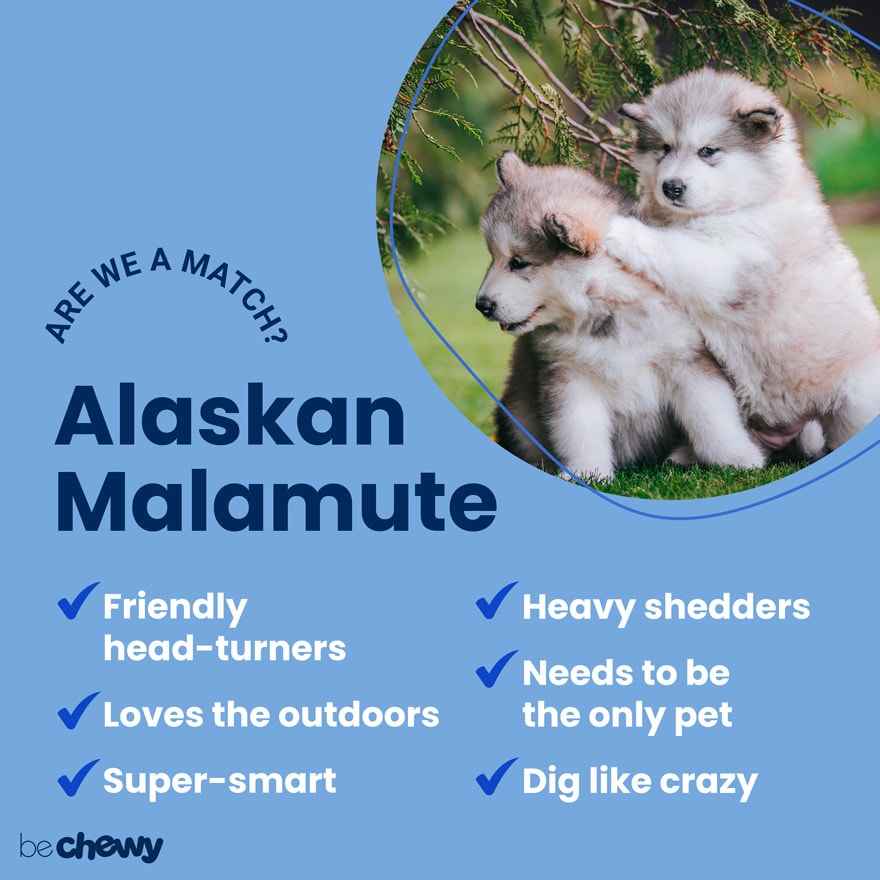
Top Takeaways
Alaskan Malamutes make great family dogs for active pet parents. They’re loyal, loving and always game for outdoor adventures. Yes, they’ll dig holes in your backyard, but keep them busy with a dog sport or training, go on long walks or bike rides (they can pull you!) and your Mal will reward you with plenty of snuggles and kisses.
Julia Berquist, dog trainer and chair of Alaskan Malamute Club of America‘s public education committee; Jen Effler-Leveile, a vet tech in southeastern Wis., and AMCA board member; and Katy Nelson, DVM, a vet in Alexandria, Va.

Search for Adoptable Alaskan Malamutes Near You
Top Alaskan Malamute Names
These are the top Alaskan Malamute names as chosen by Chewy's pet parents!
Female Names
- Luna
- Nala
- Nova
- Athena
- Freya
- Willow
- Miska
- Sasha
- Aurora
- Koda
Male Names
- Koda
- Loki
- Bear
- Odin
- Zeus
- Moose
- Ghost
- Thor
- Milo
- Apollo
Share:
